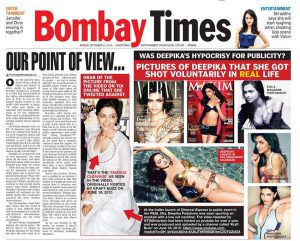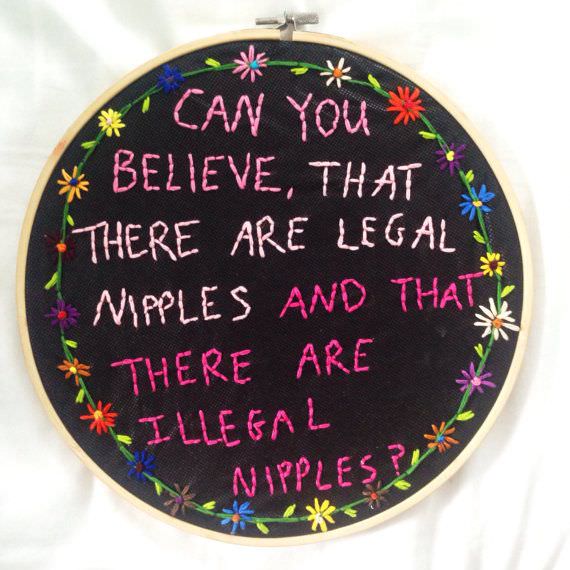The Indecent Representation Of Women In Advertising & Media: What The Proposed Amendment Means
With technological advancement and the development of electronic media as well as the introduction of the Internet, there has been a revolutionary change in the field of mass media and communication. Owing to the same, a need was felt to amend the Indecent Representation Of Women (Prohibition) law regulating the portrayal of women to broaden its scope and bring within its ambit all other forms of media and publication introduced with the technological revolution. Accordingly, the Indecent Representation of Women (Prohibition) Bill, 2012 was introduced in the Rajya Sabha on 13.12.2012. This article critically analyses the changes proposed in the Bill.
History of the Legislation
The introduction of the Bill against indecent representation of women in the Rajya Sabha in 1986 was in response to the demand by the women’s movement for a legislative action against the derogatory depiction of women in India. Introduced in the Rajya Sabha by Margaret Alva, the bill became law by way of enactment with effect from October 1987.
The law aimed to regulate the representation and portrayal of women in mainstream media, particularly in print media. It was brought into force to ensure that the portrayal of women in media by means of advertisements, writings, publications and illustrations was not such that could be termed “indecent”. Given the time-period it was enacted, the 1986 Act, which continues to be in force, focused primarily on print media and advertising.
The Need for a New Law
The Indecent Representation of Women (Prohibition) Bill 2012 proposes to give effect to the changes necessary to the existing framework – laying emphasis on the portrayal of women in audio-visual and electronic media and attempting to address the problem of increased objectification of women. Apart from ensuring that the regulatory framework that the law incorporates is inclusive of media in all its forms, the Bill also provides for a strict enforcement mechanism, which is to serve as a deterrent, imposing penalties on any act which is a contravention of the law.
Two significant changes that the Bill proposes to introduce are those with respect to what advertisements would fall within the scope of the Bill once enacted, and also what would amount to distribution in order to attract the penal provisions of the regulatory regime proposed under the amendment. The regime proposed has been defined in a manner to include print and digital media as well as electronic modes of distribution of such material.
Defining Indecency
Under the 1986 Act, The term “indecent representation” has been defined in Section 2(c) in this manner: “indecent representation of women” means the depiction in any manner of the figure of a woman, her form or body or any part thereof in such a way as to have the effect of being indecent, or derogatory to, denigrating, women, or is likely to deprave, corrupt or injure the public morality or morals.”
Under the 2012 Bill, the definition under Section 2(c) has been revised in the following words:
“Indecent representation” means (i) publication or distribution in any manner, of any material depicting women as a sexual object or which is lascivious or appeals to the prurient interests; or (ii) depiction, publication or distribution in any manner, of the figure of a woman, her form or body or any part thereof in such a way as to have the effect of being indecent or derogatory to or denigrating women or which is likely to deprave, corrupt or injure the public morality or morals.”
The proposed amendment also continues to remain ambiguous with respect to certain areas and scenarios. The Principal Act, as well as the proposed amendment, may differ in terms of scope of applicability. However, the term “indecent representation” continues to be defined in a vague manner, leaving the same open to interpretation and therein lies the problem.
The definition of the term “Indecent Representation” in the 1986 Act, in laying emphasis on material which tends to “deprave or corrupt”, confused indecency with morality. Further, women’s groups advocating against the indecent portrayal of women in the 1970s and 1980s focused primarily on nudity and the depiction of women in a sexually suggestive or explicit manner, thus reinforcing the idea that the expression of sexuality, particularly that of a woman would amount to obscenity.
Also See: Ad campaign use man boobs in video to show women how to spot breast cancer
Third Wave Feminism, in its fight for gender equality, shifted its focus to the liberty of women to express their sexuality and sexual desires, freedom from conformation to dress codes and to bodily autonomy. In contemporary times, to equate nudity with indecency would be to disregard the advances made by women’s movements for equality with campaigns like “Free the Nipple” or “Slut Walks” which is a means to advocate for empowerment.
Further, this would also encourage moral policing of women’s bodies to the extent that any content involving “nudity” would be disallowed or banned, irrespective of the purpose behind its publication, much like the Breast Cancer Awareness Video which was banned by Facebook, though the social media platform later issued an apology for the same.
Also See: Facebook Is Still Terrified Of Women’s’ Nipples
As per the data available with the National Crime Records Bureau (NCRB) a total of 895, 453, 141, 362 and 47 cases under the Indecent Representation of Women (Prohibition) Act, 1986 have been reported for the period spanning 2010-2014 respectively of all of which show a varies understanding of “indecent representation”, which hinders effective application of the law.
When the standard of derogatory portrayal is not categorically defined, there is always a possibility of the same being interpreted on the benchmark of an orthodox morality. The same morality that warrants the Central Board of Film Certification (popularly known as the Censor Board) to deem it appropriate to screen a song describing a woman as a piece of meat to be enjoyed with alcohol, but be opposed to a bra being showcased on a 70mm screen, or non-heterosexual couples kissing in a song sequence because public decency et al. Does The Times of India’s reporting of cleavages and perfect bodies attract the one provisions of the Act or is that nothing but mere coverage of ‘public figures’ which would escape the clutches of the populist understanding of decency? The word ‘decency’ itself is fraught in this patriarchal society that restricts the expression of women’s sexuality within marriage and never fails to remind them that purpose of their existence is all but to be the object of a man’s desire.
Also read: Bombay HC on Indecent Portrayal in Pati Parmeshwar

They never learn: Bombay Times in response to the Cleavage Controversy.
An Act to Penalise Revenge Porn
Pornography becomes a contentious issue in the discourse on decency, the term often being overlapped with obscenity. Though a distinction is drawn between obscenity as defined under the Indian Penal Code in Section 292 and indecency, the definition is still too vague, leaving the ground open for misuse. In this context, it is critical to take into consideration the emphasis that the Act, as well as the proposed amendment, lay on the woman intention behind the depiction of a woman in a particular manner and whether or not the same is done in an attempt to denigrate the victim.
An important outcome of the passing of the Bill and the enactment of the new law will be with regard to the distribution of material on the Internet and the portrayal of women over the web. A recent report by FII: “Violence” Online in India: Cyber Crimes Against Women & Minorities on Social Media, surveyed 500 Indian internet users. The report revealed the extent to which persons on the internet, women in particular, were subjected to sexually exploitative material and image based sexual abuse, more commonly referred to as “Revenge Porn”. The proposed amendment, unlike the IT Act, 2000, is a gender-specific Statute and thus, is likely to be an enabling provision for countering the presence of such non-consensual material over the web.
Also read: Here’s Why It Is Image-Based Sexual Abuse And Not Revenge Porn
The Courts’ Attempt to Steer the Understanding in the Right Direction
In Aveek Sarkar Vs. State of West Bengal a picture of Tennis player Boris Becker posing nude with his dark-skinned fiancée Barbara Feltus had come under the scanner for being violative of the provisions of the Indian Penal Code, 1860 and the Indecent Representation of Women (Prohibition) Act, 1986. The court, emphasising the Community Standards test held that “The message, the photograph wants to convey is that the colour of skin matters little and love champions over colour. The picture promotes love affair, leading to a marriage, between a white-skinned man and a black-skinned woman. We should, therefore, appreciate the photograph and the article in the light of the message it wants to convey, that is to eradicate the evil of racism and apartheid in the society and to promote love and marriage between a white-skinned man and a black-skinned woman. When viewed in that angle, we are not prepared to say that the picture or the article which was reproduced by Sports World and the Anandabazar Patrika be said to be objectionable so as to initiate proceedings under Section 292 IPC or under Section 4 of the Indecent Representation of Women (Prohibition) Act, 1986.”

The Image as published in Sports World’s issue dated 05.05.1993
Conclusion
Apart from broadening the scope of the law, the Bill pending enactment also introduces stricter penal terms by way of increasing the quantum of punishment as well as the fine, particularly in the case of repeat offenders. The Bill has been under consideration by the Parliamentary Committee of the Human Resource Development Ministry which has also looked into the question of bringing films and television programs within the ambit of the Act in order to ensure that there is no indecent portrayal of women in the same. In its 258th Report on the Bill, the committee has also proposed the setting up of a Central Agency for regulation and enforcement of the provisions of the Act.
However, unless a standard is set to determine exactly what the legislation attempts to penalise, the regulatory framework proposed to be enforced may be hollow to a certain extent. The Bill once enacted may be an advancement of law in terms of making it a comprehensive regulatory framework keeping up with the times and evolving so as to bring within its domain the publication and distribute of data in all its forms, both print and electronic. Where there seems to be a lacuna though, is that though the playing field has been demarcated, the rules of the game have been left open to interpretation.
About the author(s)
Graduate from Lady Sri Ram College & Faculty of Law, University of Delhi. Currently working as a Law Researcher at the High Court Of Delhi.





Unclear definitions are the biggest problem in our laws and they will never be able to define it because its really hard to understand the intentions.